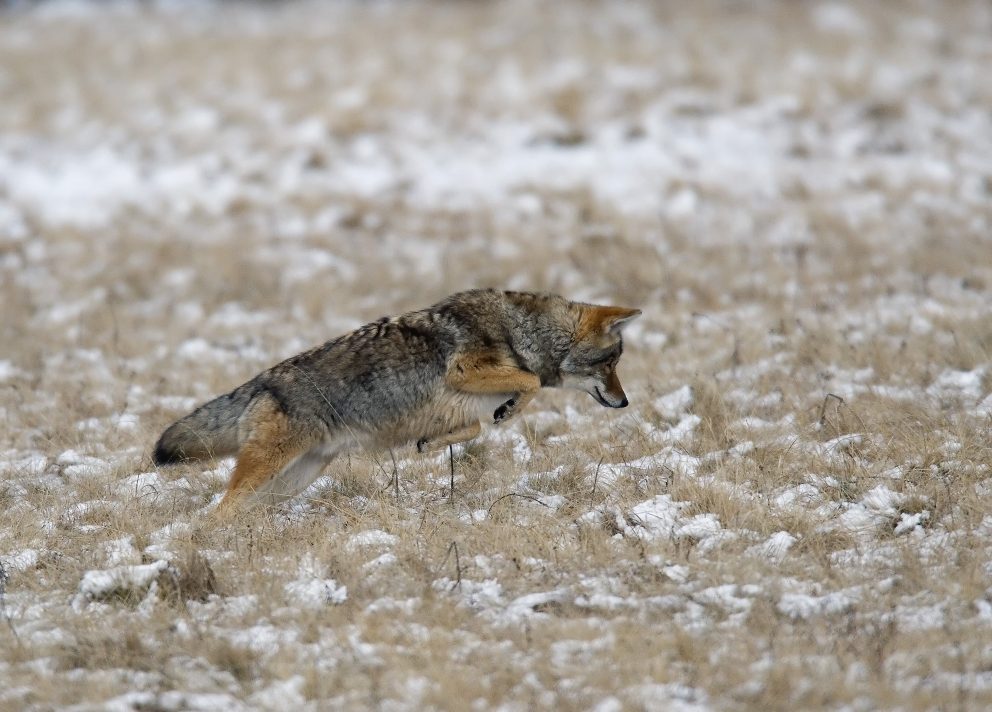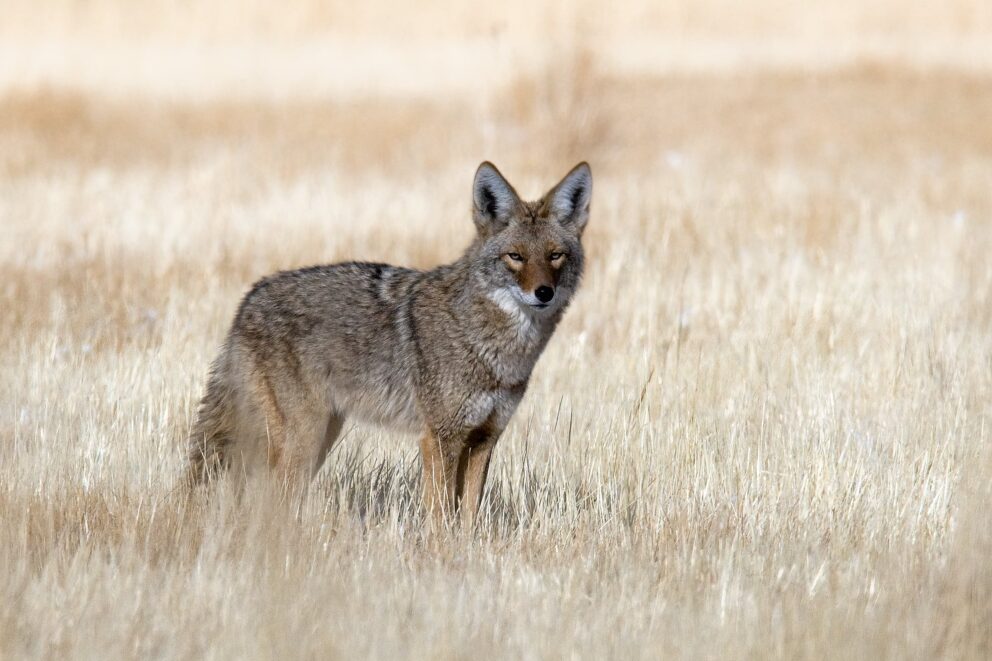- SCIENTIFIC NAME
- Canis latrans
- CLASSIFICATION
- Mammal
- LIFE SPAN
- 5-7 Years
- SIZE
- 30-40” | 15-46lbs
- STATE CONSERVATION STATUS
-
- Unprotected
- FEDERAL CONSERVATION STATUS
- Least Concern
- GAME STATUS
- Non-Game
- GAME TYPE
- None
- Washoe
- Humboldt
- Pershing
- Churchill
- Mineral
- Lyon
- Douglas
- Carson City
- Storey
- Elko
- Lander
- Eureka
- White Pine
- Esmeralda
- Nye
- Lincoln
- Clark
Habitat & Range
Coyotes are found in about any type of habitat where they can find food and a place to hide. They seem to show some preference for brush covered rolling hills and flats. Coyotes have perhaps the most varied habitat of any animal in Nevada and they thrive in both wild areas and urban settings.
- Cold desert shrubland and sagebrush
- Developed Landscapes
- Upland Forests
Threats
- Habitat Fragmentation
Natural History
Coyotes are opportunistic omnivores, meaning they will eat just about anything. However, a large portion of their diet is made up of other animals like cottontail rabbits, ground squirrels. and mice. While they prefer eating fresh meat, they will eat carrion (deceased animals) as well. They will also eat grass, fruits, seeds, and insects. Some Coyotes live in packs, whereas others are solitary and live on their own. In Coyote packs, there is an alpha male and an alpha female. Only the alphas reproduce in the pack, all other Coyotes in the pack help to defend their territory. Coyotes have one litter of pups per year and breeding usually occurs from January to March. Coyotes typically have six pups per litter, though this number can vary.
Fun Facts














